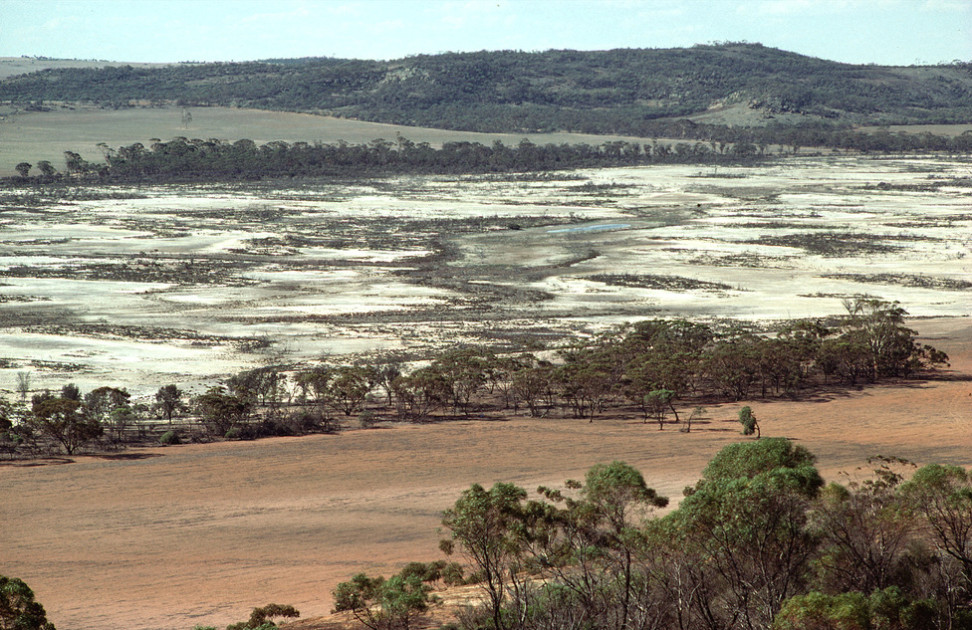Salinity doesn’t have to be as bad as in this photograph to cause problems in new homes.
It’s also quite common for land that has not got salinity issues to develop salinity over several years.
Building Problems Due To Salinity
Problems can range from cosmetic through to significant structural issues.
Efflorecence This is the white powdery deposit sometimes seen on brickwork or concrete. Sometimes it is caused by salts in the materials themselves, (See this link Efflorecence)
Breaking Up Materials If salt is carried into the wall be water and then dries it will form crystals inside the bricks, mortar, or concrete. These crystals can form internal pressure on the materials causing the external surface to crumble away.
Acid attack Acids can be formed that will increase the porosity of concrete and reduce its strength.
Increased Steel Corrosion A wet saline solution is likely to result in corrosion of concrete reinforcement and Brick Ties.
Solutions
- Provide a Damp Proof Membrane under the slab.
- Make sure the Damp Proof Course detail is effective; and is an appropriate height above ground level.
- Check the land slopes away from the house.
- High quality concrete including:
- Low Water/Cement Ratio, with no added water on site.
- Proper Curing procedures.
- Sulphate resistant cement and/or higher strength concrete.
- Concrete well vibrated to remove entrapped air and ensure high density in and around the reinforcing and formwork.
- Increased concrete cover to steel reinforcement.
